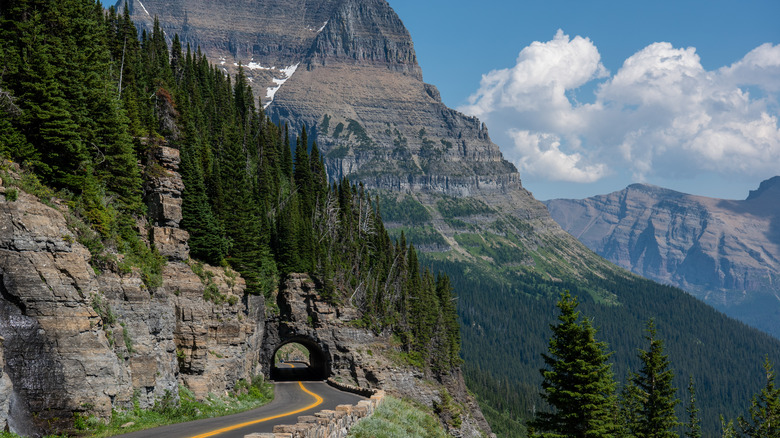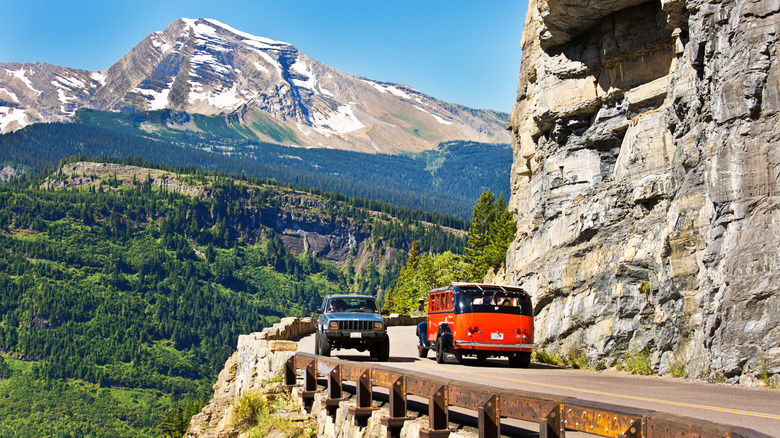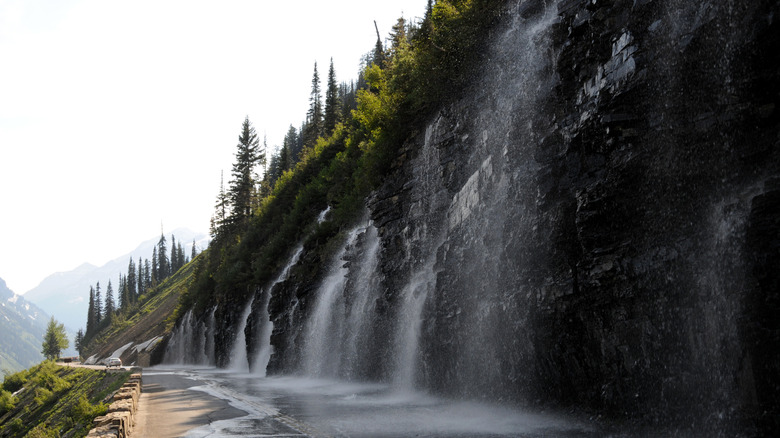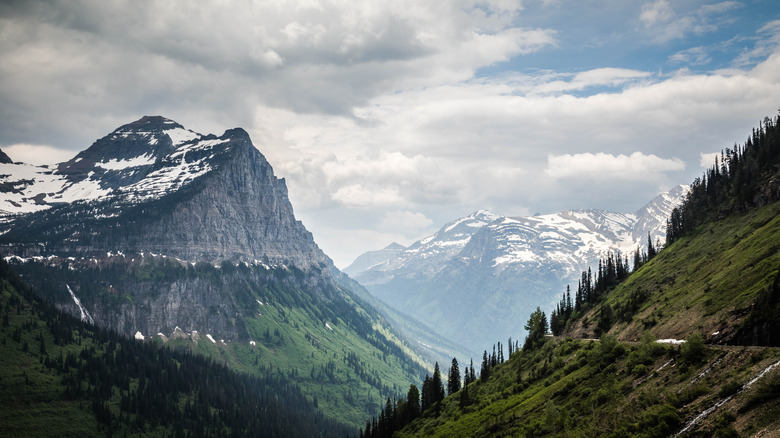Montana's Scenic Rocky Mountain Road Offers A Picturesque Drive In Glacier National Park
To say the drive along Going-to-the-Sun Road is picturesque would be something of an understatement. Located in Glacier National Park, this is one of many must-visit spots in Montana and is the perfect place to experience the spectacular beauty of the Rocky Mountains. Running 50 miles between West Glacier and St Mary to the east, this short but awe-inspiring Montana road trip takes you past impressive waterfalls, through forested valleys, and over alpine passes that reach up to around 6,600 feet.
It was one of the first routes constructed by the National Park Service primarily for road tourism. Work on this ambitious engineering project began in 1921 and was originally named the Transmountain Highway. After more than a decade of building through challenging conditions, the road was finished in 1933. It was renamed after Going-to-the-Sun Mountain, one of the highest peaks in the park, and has since become one of the most historic landmarks in the Northwest.
To access the road from the west, it's a 25-mile drive from Whitefish to the Apgar Check Point at West Glacier. If you're entering from St Mary in the east, it's a 28-mile drive from Browning. While the lower sections of the route are open all year round, the alpine section around Logan Pass is only accessible in summer. It typically opens in early July, once the snow has been cleared, and remains open until around mid-October.
Scenic drive options in Glacier National Park
There are several ways to enjoy the Going-to-the-Sun Road. Firstly, the classic way of driving it yourself. Although the whole route takes around two hours, you'll want to allow much more time to pull over at the many viewpoints or explore the various trails. Be aware that there are vehicle size limits between Avalanche Creek and Rising Sun, with a maximum length of 21 feet and a width of 8 feet. Speed limits are in place, too, so you'll need to stick to 40 mph in the low valleys and 25 mph in the mountain passes.
Secondly, if you'd rather focus on the views than the road, consider taking an open-top bus with Red Bus Tours and learn a little about the history of the park as you drive along. Thirdly, there's a free shuttle service that runs daily in both directions from July 1 until Labor Day with east and west routes meeting at Logan Pass, where you'll need to transfer if continuing. And, on weekends in Spring, there's a hiker-biker shuttle complete with bike trailers which runs between Apgar, Lake McDonald Lodge, and Avalanche Creek. You could cycle the route too, but there are restrictions in the busy zones during peak hours.
The best stops and viewing points on the Going-to-the-Sun Road
The route is essentially one continuous viewpoint, but if you're driving the Going-to-the-Sun Road from the west, there are some standout highlights not to miss. After the visitor centre at Apgar, you'll pass wide open views of Lake McDonald. At its north end is McDonald Falls, a series of cascades easily visible from the viewing point on the roadside. Further along at Avalanche, the popular wheelchair-accessible Trail of the Cedars is a short half-mile detour through ancient cedar forest. The popular Avalanche Lake Trailhead also starts here, if you're up for a longer 6-mile walk. A few miles on, at the sharp hairpin bend known as The Loop, you can pull off the road to admire Heavens Peak or set off on The Loop Trail toward Granite Park Chalet.
More waterfalls await as you catch sight of the 560-foot Bird Woman Falls across the valley, and then Weeping Wall, where the cascades spill directly onto the road early in the spring as the mountain snow starts to melt. As the road climbs up to Oberlin Bend Overlook, it clings to the mountainside with dizzying views of Mount Oberlin and Logans Pass. At the summit, there's a visitor centre where you'll stand a great chance of seeing mountain goats and bighorn sheep. Both the Hidden Lake Overlook Trail and the Highline Trail start from here. As you near the end of the road, east of Logan Pass, you'll see the only glacier visible from the road at Jackson Glacier Overlook. As one of the more popular stops on the road, there's a decent-sized parking lot.
Reservation tips and lodging options along the road
The Going-to-the-Sun Road has become extremely popular and, therefore, gets very busy. Timed entry reservations now limit the flow of traffic in peak season. If you're heading eastbound, reservations are required from early June to late September between 7 a.m. and 3 p.m. You can pay the $2 fee on recreation.gov. This reservation cost is in addition to the $35 entrance fee to Glacier National Park, which is valid for seven days. When you book, you choose your two-hour entry window, but once you're on the road, you can stay all day. To avoid the crowds and stand a better chance of spotting wildlife, you can also enter before 7 a.m. or after 3 p.m. when no reservations are necessary.
This is the part that trips people up: Reservations are tied to where you enter during those hours, not which direction you're headed. They're only required to enter at the Apgar Checkpoint on the west side between the hours stated. If you start from St Mary, you don't need a timed entry reservation. If you plan on taking your time, there are several places to stay, but they should be booked well in advance. There are campgrounds and picnic sites at Apgar, Sprague Creek, Avalanche, Rising Sun, and St Mary, with more accommodation at Lake McDonald Lodge, where you'll find EV charging. Dogs are allowed in the campgrounds and parking lots, but not on the trails. If you are heading out on the trails, again, it's best to make an early start to have a better chance of parking at the trailheads. Bring plenty of water and bear spray, as grizzlies roam the park. And if you're keen on birdwatching, bring your binoculars.



